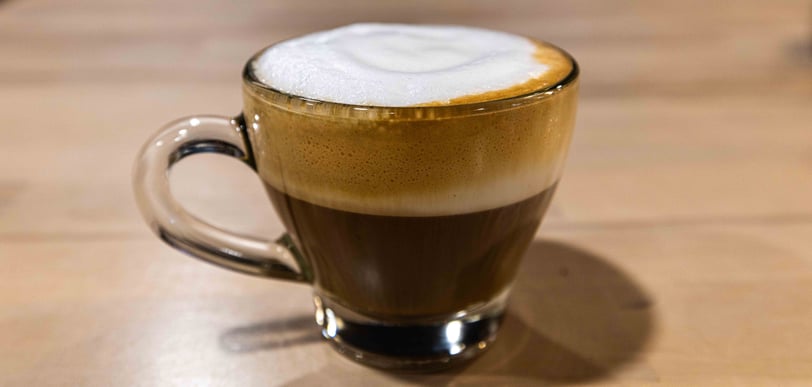Why Milk Matters for the Perfect Cappuccino
Crafting the perfect cappuccino isn’t just about the coffee beans or the espresso machine. One of the most overlooked yet crucial elements in this equation is milk. While it might seem like a simple addition, the milk you choose and how you prepare it can elevate a cappuccino from ordinary to extraordinary. Here’s why milk matters and how to make it shine in your next cup.
1/28/20253 min read


The Role of Milk in a Cappuccino
A cappuccino is defined by its harmonious balance of espresso, steamed milk, and foam. The milk serves two main purposes:
Texture and Mouthfeel: The steamed milk provides a creamy texture that complements the bold, rich espresso, creating a smooth and luxurious drinking experience.
Flavor Enhancement: Milk's natural sweetness offsets the espresso’s bitterness, creating a well-rounded flavor profile.
The right milk can bring out the nuanced flavors of your coffee while creating the velvety microfoam that makes a cappuccino iconic.
Choosing the Right Milk
Dairy Milk
Whole Milk is the gold standard for cappuccinos. Its balanced fat content (around 3.25%) produces a creamy texture and stable microfoam that integrates beautifully with espresso.
Low-Fat Milk creates lighter foam and a slightly less creamy texture, making it an option for those who prefer a less rich cup.
Nonfat Milk foams more easily but lacks the richness of whole milk. Its airy foam can sometimes feel overly light, detracting from the creamy mouthfeel of a classic cappuccino.
Non-Dairy Milk Alternatives
Oat Milk is a favorite for its creamy texture and natural sweetness, which pairs well with espresso. Look for barista-specific versions for the best frothing results.
Almond Milk offers a nutty flavor but can be harder to froth. It’s best to use a barista blend designed for steaming.
Cashew Milk offers a mild, creamy flavor that complements espresso without overpowering it. Its natural creaminess makes it a great option for cappuccinos, although it can be slightly more challenging to froth compared to oat or soy milk.
Soy Milk creates a rich foam and blends well with espresso, though it can sometimes overpower lighter coffee flavors.
Coconut Milk adds a tropical note to your cappuccino. Its high fat content can produce a rich foam, but the flavor isn’t always subtle enough for all coffee types.
The Science of Milk Frothing
The art of frothing milk lies in creating microfoam—tiny bubbles that give steamed milk its creamy, silky texture. Here’s how it works:
Proteins Stabilize Foam: The proteins in milk stabilize the bubbles formed during steaming. Dairy milk naturally contains the right balance of proteins to create microfoam, while non-dairy alternatives often require added stabilizers.
Fat for Creaminess: Fat contributes to milk’s creamy texture. Whole milk’s higher fat content provides a rich, velvety mouthfeel, while low-fat or non-dairy milks may feel lighter.
Temperature Matters: Milk should be steamed to around 150°F (65°C). Overheating can scald the milk, destroying its sweetness and compromising the foam’s quality.
Techniques for Perfect Milk Steaming
Start with Cold Milk: Use cold milk and a chilled pitcher for the best results.
Positioning the Steam Wand: Submerge the wand just below the surface of the milk to incorporate air and create foam. Once froth forms, lower the wand deeper to heat the milk evenly.
Listen for the Sound: A hissing sound indicates proper frothing. Avoid large bubbling noises, which mean the wand is too high.
Swirl for Silkiness: After steaming, swirl the milk in the pitcher to integrate the foam and liquid for a smooth, glossy texture.
Pairing Milk with Espresso
The type of milk you choose can complement or clash with your espresso. Richer, chocolatey espresso pairs beautifully with whole or oat milk, while lighter, fruity roasts might shine with almond or nonfat milk. Experimentation is key to finding your perfect match.
Conclusion
Milk is far more than just a supporting actor in your cappuccino—it’s an essential ingredient that influences texture, flavor, and overall experience. By understanding how to choose and prepare milk properly, you can elevate your cappuccino game and enjoy a café-quality drink every time.
Next time you sip your cappuccino, take a moment to appreciate the role milk plays in creating that creamy, velvety masterpiece. After all, the perfect cappuccino is a blend of art, science, and the magic of milk.


